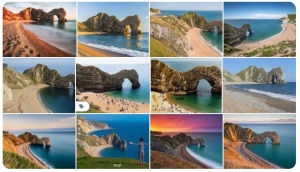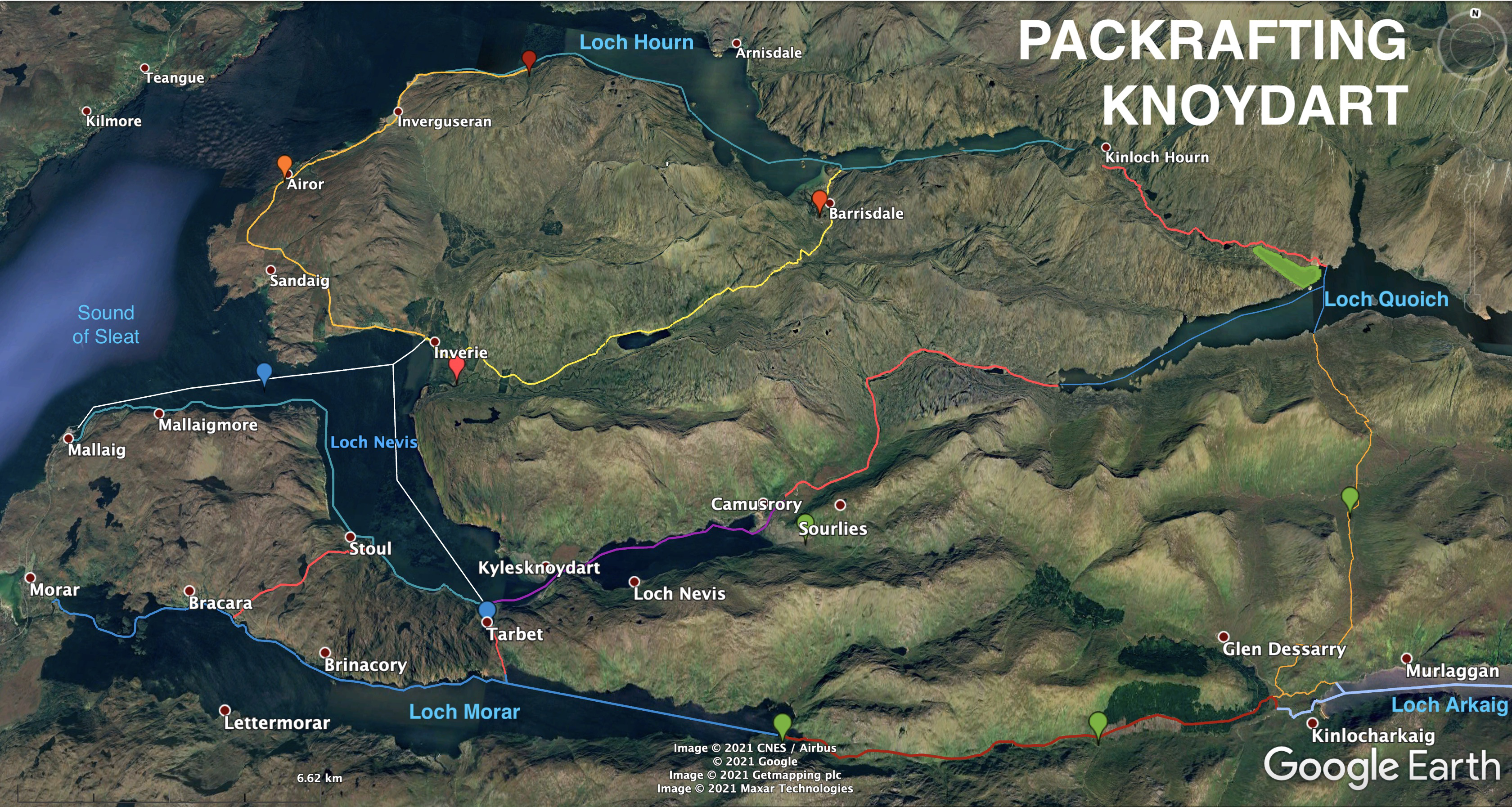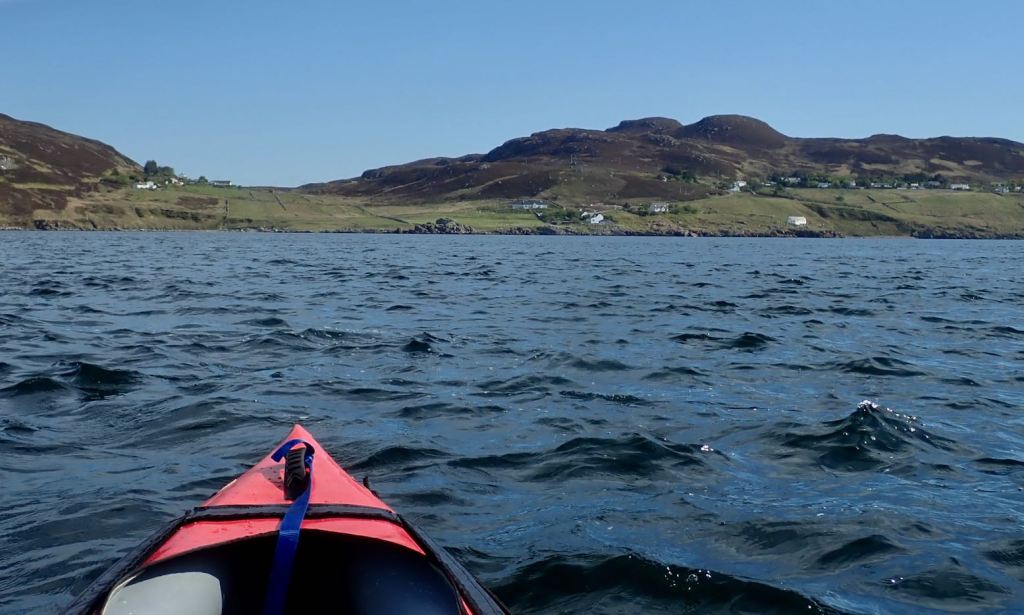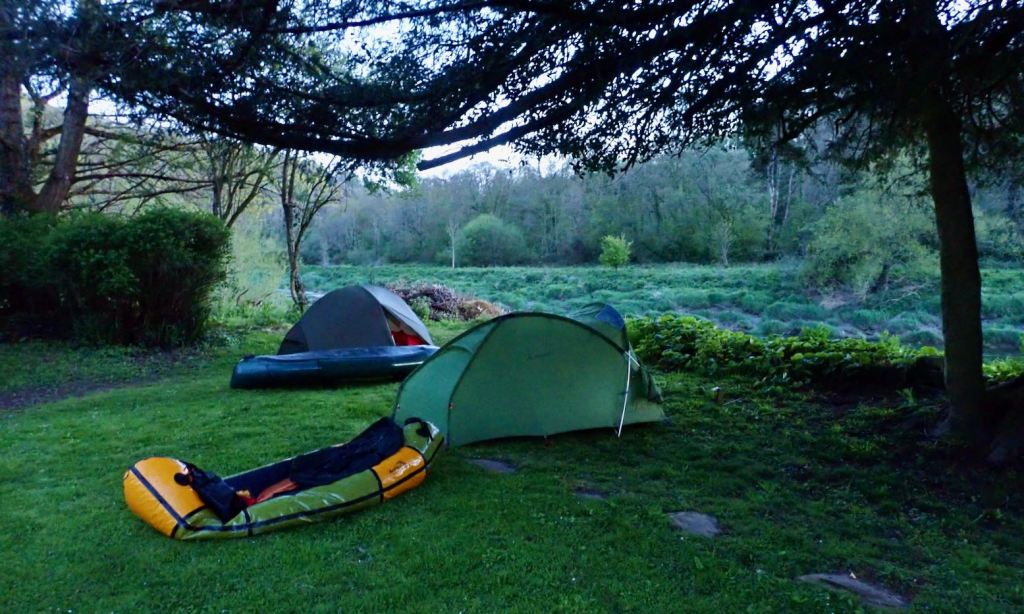See also
Sigma TXL Index Page
MRS Nomad
Rye to Hastings
Newhaven to Brighton
Chichester to Bognor
Hayling Island
Swanage Stacks
Studland to Swanage
South West Sea Kayaking guidebook
I’ve done a few IK paddles in Southeast England between Rye and Portsmouth, but the Sussex and Hampshire coasts aren’t that inspiring. So it’s about time I started exploring the far more interesting and much more extensive Southwest Coast. From the Isle of Wight to Cornwall and back up to the Severn there are scores of inshore excursions possible in an inflatable. Just as in the far northwest where I mostly sea paddle, all you need is a fair tide and paddle-friendly winds, the latter a bit less rare down south.

So in the face of predicted moderate winds I cooked up a 50-km Jurassic overnighter from Weymouth to Swanage in Dorset. I’m pretty sure they opportunistically rebranded the plain old Purbeck or just ‘Dorset’ coast as the ‘Jurassic Coast‘ soon after that 1993 movie and haven’t looked back since.
Like much of the Southwest coast, the beaches and country lanes become a logjam of holidaymakers on a warm summer’s day. On the water, our paddle would pass below sections of cliffs a couple of miles long and take us to the famed landmarks of Lulworth Cove, Durdle Door arch (top of the page) and Dancing Ledge. We could even carry on back north past Old Harry’s Rocks and across Studland Bay right into Poole Harbour to catch out trains home.
Compared to using regular (solo) packrafts, my confidence in my TXL for sea paddling is a revelation. After all, it’s still just another blobby, single-chamber packraft. It must be a combination of the added size giving a kayak-like perception of security (as I found in my MRS Nomad), as well as the responsiveness and speed from a longer waterline and, I now recognise, the sometimes noticeable added glide from the Multimat floor. There’s also the fact that paddlechum Barry was up for the Dorset run in his similar MRS Nomad, making this untypical packraft outing less daunting.

For some bathymetric reason – possibly the Atlantic tidal surge backing up in the Straits of Dover, plus hidden offshore shelves – the tides off the east Dorset coast are very odd: they can rise or drop all day, but have a range of just two metres, about as low as it gets in the UK. That ought to mean moderate ebb flows pushing up against prevailing westerlies, plus we were heading into neaps. And while often cliff-bound, if we stayed alert to escape routes we could easily bail and walk or climb out with our packrafts.
East of Lulworth Cove the Jurassic Coast‘s bucket & spade Babylon is interrupted by a 5-mile wide Danger Area – an army firing range. This was probably not one of UNESCO’s criteria for World Heritage status, but the SW coastal path also gets closed for a similar distance. Barry’s Reeds Almanac had a page or two on this (left), as well as useful tidal flow charts (drops to the west; rises east). I left it to Barry to call the ‘0800 DUCK!’ number, but imagined surely they’d leave the target practice to the off season. In fact they’re all it most of the time Mon–Fri, including an evening session 9pm to midnight: all we had to do was click this.


With a plan taking shape, I in turn bought a copy of Pesda’s South West Sea Kayaking in the hope of being alerted to local anomalies. I’m glad I did. It turned up with just hours to spare and identified that the run from Kimmeridge Bay round the Purbeck corner to Swanage was a grade up from the easy section from Weymouth. With headlands, submarine ledges and long lines of cliffs, without a foot recce I decided we may be better off skipping this bit.



I’m giving the Multimat floor yet another go too, all the better to skim over the water.

But around 5pm winds are said to veer offshore and strengthen, so we’ll see.
We sail at about 5-6kph – not much faster than paddling – but I note my TXL creeps forward about half a click faster than the MRS – must be the stiffening Multimat.



Note how the layers of chalk beds here have been pushed up to nearly vertical.
Give it half a million years and Bat’s Head will be as big as nearby Durdle Door.

The TXL still weathercocks a bit under sail; I keep having to steer hard inland, but the bowsprit ‘stick’ limits the sail’s ability to twist. Or maybe the wind’s bouncing off the cliffs and blowing us offshore a little.
Sitting further back to weight the back end over the waves may help.


In high summer young bloods jump off the 60-metre arch. Appropriately, it’s called ‘tombstoning’.

‘I thought you said you were going call them, Barry? You had one job to do…’
‘But you said they hardly ever do this on a balmy, July’s day!’
And so it went on…



As we slurp a 99 with sprinkles the odd gust blows offshore.
We can’t even pack up and walk the cliff path; it’s closed too, and so is the B3070 road.
Barry wants to paddle on a 5pm, but I propose we bus to Swanage rather than risk being be left high and dry.
Tomorrow we’ll paddle north towards Poole – or as far as the predicted headwinds allow.





The Anfibio Multimat passed the sleeping test, too.

Above, a ferry heads from Poole to the Channel Islands.



Ballard Down chalk cliffs and pinnacles stretch out beyond, and Bournemouth’s at the back.




We may carry on to Poole itself, but a strengthening wind may nix that idea.

We reversed this trip a couple of months back.









Halfway across, I remove a metre-long, kilo of Swanage string-weed caught in his skeg.

But the GPS revealed we kept plugging on at 5kph, just with a lot more effort.
As Barry observed, it was a slog but good to know our packrafts can progress against this sort of wind.



















































































































































































































